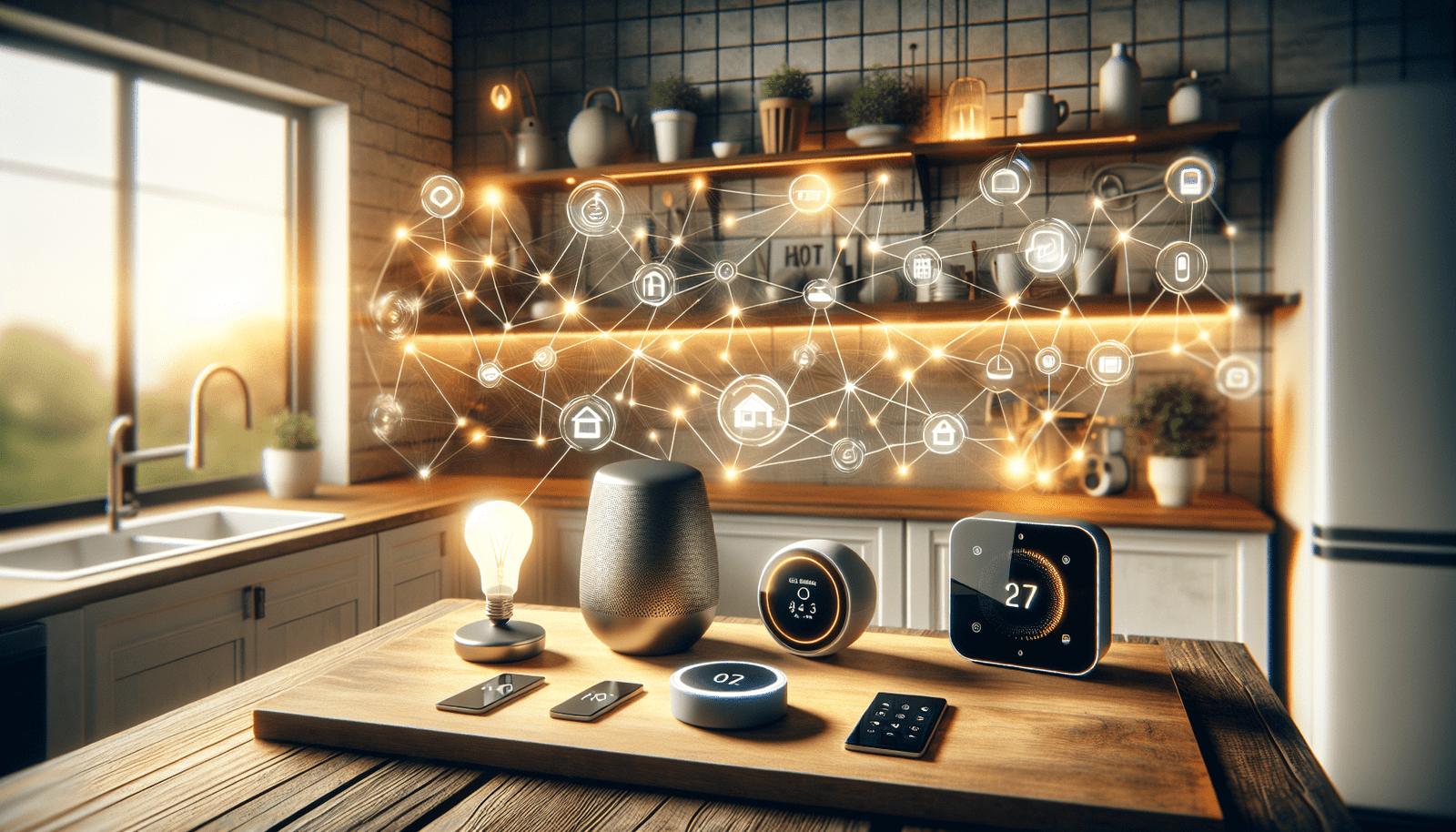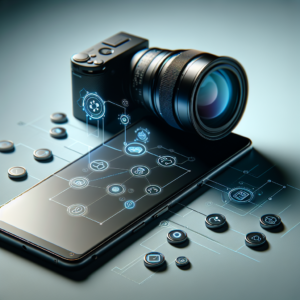Have you ever wondered how safe your personal data really is when using smart devices at home? As I navigate my daily life surrounded by the Internet of Things (IoT), it’s a question that crosses my mind often. With our world becoming increasingly connected, securing data has never been more crucial. Let’s unpack this topic together, shall we?
Understanding the Internet of Things (IoT)
The term Internet of Things refers to the vast network of interconnected devices that communicate with each other and share data over the internet. This includes everything from smart thermostats and home assistants to wearables like fitness trackers.
What Makes IoT Pervasive?
The convenience of IoT is undeniable—imagine being able to adjust your home’s temperature from across the world or track your health metrics in real-time. However, this convenience comes at a cost. The more devices connected to the internet, the more vulnerabilities there are that can be exploited by malicious actors.
The Growing Landscape of IoT Devices
Every day, billions of devices are connected to the internet. Statistically, it’s estimated that by 2025, there will be over 75 billion IoT devices worldwide. I can’t help but feel a mix of excitement and concern. Each new device enhances my experience but also raises my awareness of potential security threats.
Why Data Security in IoT Matters
With the increase in connected devices comes an increase in data collection. This can include personal information, usage statistics, and sensitive data. Protecting this information is of utmost importance, both for personal privacy and for ensuring the security of broader infrastructures.
Real-Life Cases of Data Breaches
Data breaches are more common than I’d like to admit. For example, in 2017, a major security flaw in a popular IoT camera allowed hackers to access users’ personal video feeds. Such incidents remind me just how crucial it is to implement robust security measures when using these devices.
Vulnerabilities in IoT Devices
Understanding the vulnerabilities in IoT devices helps me take proactive steps to secure my data better. Here are some common issues:
Weak Default Passwords
Many IoT devices come with default factory passwords that can often be easily guessed or found online. I always make it a point to change these passwords to something more secure as soon as I set up any new device.
Inadequate Data Encryption
Not all IoT devices encrypt the data they send and receive. If a device is hacked, any unencrypted data might be easily accessible. This is why I look for devices that prioritize data encryption, keeping my information more secure.
Lack of Regular Firmware Updates
Manufacturers don’t always provide timely updates for their devices. Without these updates, vulnerabilities can remain unpatched, opening the door for security threats. I make a habit of checking for updates regularly to help mitigate this risk.
Steps I Take to Secure My IoT Data
It’s vital to be proactive about my security, so I’ve developed some strategies over time that have helped me keep my data safe. Here are the steps I follow:
1. Change Default Credentials
As I mentioned earlier, changing default usernames and passwords is the first line of defense. I create strong, unique passwords for each device, using a combination of letters, numbers, and special characters.
2. Use a Secure Wi-Fi Network
I ensure my home Wi-Fi network is secure with WPA3 encryption. Additionally, I create a separate network for my IoT devices, isolating them from my main devices like laptops and smartphones. This way, even if one device is compromised, my other devices remain safer.
3. Regularly Update Firmware
I make it a practice to check for firmware updates regularly. Updating the firmware helps patch any vulnerabilities and enhances the device’s security features.
| Device Type | Update Frequency |
|---|---|
| Smart Thermostats | Every 1-3 months |
| Security Cameras | Monthly or as needed |
| Wearable Devices | Quarterly |
4. Enable Two-Factor Authentication (2FA)
Whenever it’s an option, I enable two-factor authentication on my devices. This adds an extra layer of security—a code sent to my phone or email is necessary to access accounts, which makes unauthorized access much more difficult.
5. Monitor Device Activity
I keep an eye on my device activity. Most IoT devices have companion apps that offer insight into what data is being collected and when. If I notice any unusual activity, I act immediately to investigate.
Best Practices for Smart Home Devices
Smart home devices offer incredible convenience, but they also require a careful approach to security. Here are some recommendations that I personally follow:
1. Limit Device Connectivity
Not every device needs to be connected to the internet. I assess which devices truly benefit from a connection and limit the rest. For example, I may choose not to connect a simple lightbulb to the internet.
2. Disable Unused Features
Many devices come with features I may not need. I take time to review the settings and disable any features that aren’t in use, thus reducing the potential attack surface for hackers.
3. Be Cautious with Voice Assistants
While voice assistants can be incredibly useful, they can also be an entry point for hackers. I ensure they’re only activated when I need them and carefully manage the information they have access to.
4. Regularly Change Passwords
I find it beneficial to change my passwords periodically. This minimizes the risk of long-term exposure to any credentials that might be compromised.
Risks of Smart Wearables
Wearable technology is a growing part of my life, from fitness trackers to smartwatches. While these devices are helpful, they also come with their own unique risks.
1. Collection of Personal Health Data
Wearables collect sensitive personal health information, which puts me at risk if the data is not adequately protected. I look for wearables that are transparent about their data collection practices and prioritize privacy.
2. Insecure Apps
The apps connected to wearables can sometimes have vulnerabilities. I ensure that I download apps from recognized sources and keep them updated to prevent issues.
3. Bluetooth Vulnerabilities
Many wearables connect via Bluetooth, which can be susceptible to hacking. I make sure to disconnect my device when not in use and avoid pairing them with unknown or unsecured devices.
The Role of Manufacturers in IoT Security
While I’ve shared many steps I take to secure my data, manufacturers equally play a crucial role in this landscape of security.
1. Prioritizing Security in Design
Manufacturers should prioritize security from the design phase of devices. This includes choosing secure components and following best practices when coding the software.
2. Offering Regular Updates
I believe manufacturers have a responsibility to provide regular updates to their devices. These updates should be easy for users to apply, ensuring that everyone can maintain their device’s security.
3. Transparency about Data Usage
It makes a big difference when manufacturers are open about what data they collect and how it is used. I prefer companies that are upfront about their privacy policies, as it helps me make informed decisions about what devices to use.
Legal and Ethical Considerations
Data security isn’t just about protecting my information; it’s also about following laws and ethical standards.
1. GDPR and Data Protection
In instances where I live or rely on devices that serve regions under the General Data Protection Regulation (GDPR), I must be conscientious. GDPR enforces strict rules on how data can be collected, stored, and shared, adding an extra layer of protection.
2. Ethical Data Usage
It’s essential to choose devices from manufacturers that ensure ethical data usage. I support companies that respect user privacy and are transparent about their data practices.
The Future of IoT and Security
As I look ahead, the future of IoT and data security is undoubtedly an exciting yet challenging landscape.
1. Evolving Threats
With the growing number of devices, I expect threats to evolve. Cybercriminals may become increasingly sophisticated in their tactics, necessitating a continued focus on security from everyone involved.
2. Advancements in AI Security
The integration of artificial intelligence in security measures could help in identifying threats more effectively. I see a future where AI might proactively protect my data, making my connected devices even safer.
3. Legislative Action
As the IoT market grows, I believe that we will see more regulations from governments aimed at protecting consumers. This could include stricter rules around data protection and how companies manage their devices.
Conclusion: My Role in Securing IoT Data
In conclusion, securing data in the era of the Internet of Things is an ongoing journey for me. By being proactive and utilizing best practices, I can protect my personal data amidst the myriad of connected devices I use daily. It’s not just up to manufacturers or laws; it’s also about my responsibility to be informed and engaged.
By taking these steps and staying vigilant, I feel empowered to enjoy the benefits of IoT while minimizing the risks. Together, we can make the shift towards a more secure digital landscape in the ever-expanding world of connected devices.






